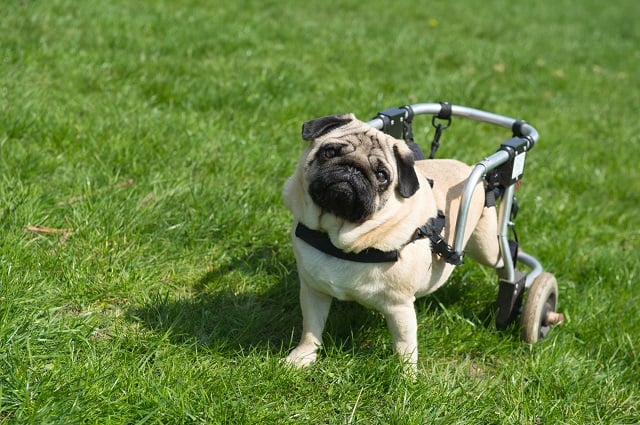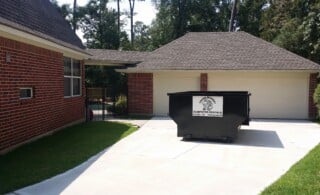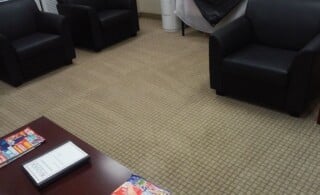
Life with a disabled pet can be challenging. The responsibilities of frequent vet visits, daily medications, and special nutrition can be demanding even for the most dedicated and attentive pet parent. But the joys of caring for a dog or cat with special needs are plentiful, and the work is rewarding.
Figuring Out Their Needs
From paralysis to loss of vision to epilepsy, your pet may have been born differently-abled, or it may have come into its struggle later in life. Whether the disability is due to old age, genetics, injury, or disease, better understanding and treatment options for all kinds of conditions have allowed most disabled pets to live fulfilling lives. All they need is the love and support of their favorite human(s).
According to Sharon Seltzer — pet parent to Sophie, a pup with special needs — there are five basic needs caretakers of specially-abled pets should keep in mind.
- Quality of Life – Look for ways to help your pet not only survive but thrive and enjoy every day. Special equipment, therapy, and extra attention are a just a few things that will your pet may need.
- Time – Inevitably, a special needs pet will require more of your time than an able-bodied one. Everyday tasks like feedings, walks, and bathroom breaks will all take more planning and preparation, as will veterinary visits and procedures.
- Money – Your pet’s special needs, from food and medication to equipment and therapy, can be costly. A pet parent must be prepared for the extra expense.
- Routine – A consistent routine is important to the health and safety of a pet with chronic issues. An established schedule for bathroom breaks, exercise, feeding, and medication also means a friend or family member can step in and take over in the event a pet parent is unable to do so.
- Creativity – While your pet’s special needs can seem overwhelming at times, it’s also important to remember to have fun. A dog or cat with an injury or illness is still a dog or cat, after all. Toys, games, and snuggles are still vital to their happiness.
How Your House Can Help
As it turns out, modifying your home to accommodate the needs of your pet can help you accomplish each of these goals and ensure your furry friend can live a full and happy life. As a bonus, minor modifications can put pet owners at ease knowing their best friend is OK.
Basic Safety
Regardless of the exact impairment, all disabled pets need a safe, comfortable place at home to spend their time. For a pet owner, that also means restricting access to areas of the home that may not be safe for their furry friend.
- Gates are an easy, inexpensive way to keep your dog or cat where they are supposed to be. Large, portable gates, available at big box and baby supply stores, can be set up in any room to keep your pet in. With a few screws, you can install safety gates at the top or bottom of stairs and in doorways to keep your pet out of spaces that may present harmful obstacles. For a more finished appearance, you might consider replacing full-length doors with Dutch doors or installing lockable pet doors to keep your pet from harm. These features allow pets more freedom while still letting you decide where they can and cannot go.
- In addition to the interior of your home, you should pet-proof exterior features Fence in swimming pools. Place rocks or barriers around other water features. Take precautions to keep pets away from nearby roads. Pay attention to potential hazards on neighboring properties as well. Installing a fence all the way around your yard might be the best way to protect them from these neighboring dangers.
- Invest in a baby monitor or, if you want to invest more in your home and pet’s safety, install a home security system that you can check via the internet to keep an eye on pets while you are out of the room or away from home.
Mobility Issues
Pets who have been in accidents or who are suffering from chronic illnesses such as arthritis may need help getting around. A few minor home modifications can ensure your pet is able to meet its most basic needs and keep its independence as long as possible.
- Non-slip flooring is a must for pets with mobility issues. In areas of the home with hardwood, tile, and linoleum flooring, rugs provide a soft, skid-free surface for your pet. You can also place runners on commonly-traveled paths to help pets move from room to room.
- Just as they help handicapped people move more freely and without pain, ramps can help your dog or cat to do the same, especially if they are using assistive devices such as wheeled harnesses. Buy or build and install ramps at entrances and over stairs.
- Stepping up and down to get in and out of bed, eat and drink, and use a litter box can also be painful. Recessed beds and litter boxes in the floors can make them easier to access. Elevated or lowered food and water bowls may also help.
- Mobility issues may lead to other issues, such as incontinence. Creating an indoor bathroom area where a pet can go potty in case of an emergency can help. Simply secure puppy pads or artificial turf to the floor by the door or in the corner of the room where your pet spends the most time.
Vision and Hearing Impairments
In the past, deaf and blind animals were not considered to be viable pets and, as a result, were euthanized at birth or upon losing their senses. Fortunately, this practice is no longer common. In recent years, we’ve come to understand that pets with these disabilities can use their other senses to live full lives. Still, life with a deaf or blind pet is easier on the animal and its owner with a few minor modifications.
- Creating a home base for your dog or cat gives it a space where it is completely comfortable and safe. Place its bed or crate and food and water bowls in the space. By making it familiar and easy to find, the home base can serve as your pet’s starting point if it gets confused while navigating your home.
- For pets with vision impairments, sharp corners can be hazardous. Install padding around fireplace hearths and on furniture edges (as you would for toddlers) to prevent injury in the event of an accidental collision.
- The four other senses are particularly important for animals who have lost one. Textures, smells, lights, and sounds can be useful in helping a dog or cat understand where they are. For instance, a plastic mat can indicate the position of food and water for a blind cat. A dimmable light can indicate it’s time for a deaf dog to come inside.
If you need an extra set of hands to help pet-proof your home while you look after you’re furry friend, consider hiring a child-proofing service. Many of these tasks overlap with their skills, and they’re used to thinking from the perspective of a curious and clumsy housemate.
In many ways, training and caring for a specially-abled pet is not that much different than caring for any other pet. These minor modifications to your home can make life easier for your pet, add to its comfort, and give you peace of mind as you both navigate the challenges that come along with a disabled pet. But the most essential element of your relationship with your beloved, furry, four-legged friend is love, and that is where you will reap the multitude of rewards that being a parent to a pet with a disability has to offer.
 Dumpster Rentals – When to Rent, Costs, & Tips
Dumpster Rentals – When to Rent, Costs, & Tips  Air Duct Cleaning
Air Duct Cleaning  Sustainable Home Improvements that Help Save the Planet
Sustainable Home Improvements that Help Save the Planet  Cleaning Your Exteriors With a Pressure Washer
Cleaning Your Exteriors With a Pressure Washer  Cleaning Wool Berber Carpet
Cleaning Wool Berber Carpet 

I have a disabled pet and I got him in the shelter. I have always time for her every time we have a checkup in the exotic animal veterinarian near me because I want to make sure that even she is disabled she is healthy and no other problems and complications.